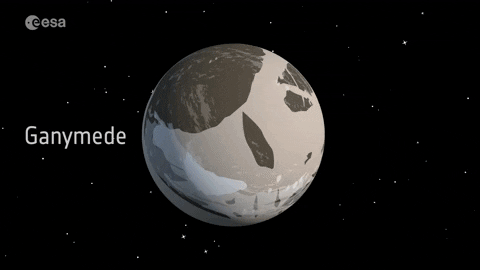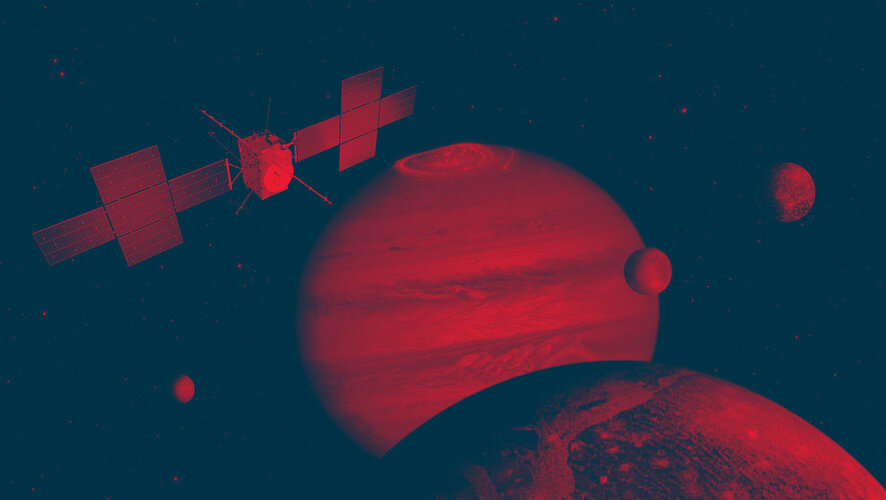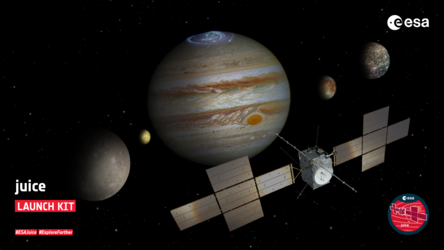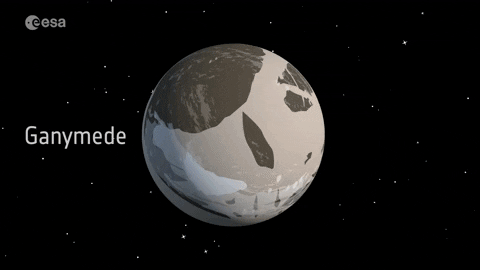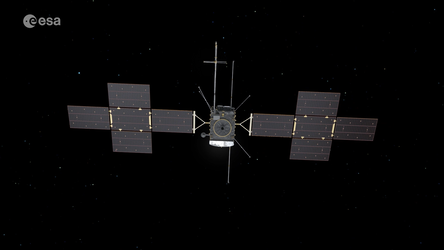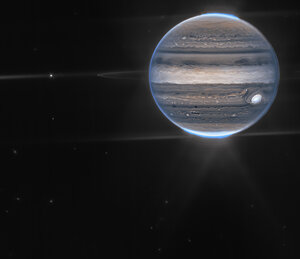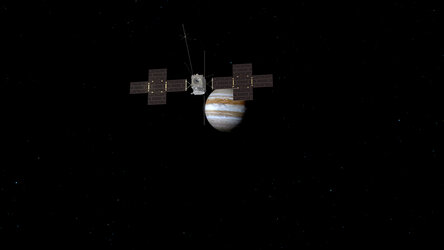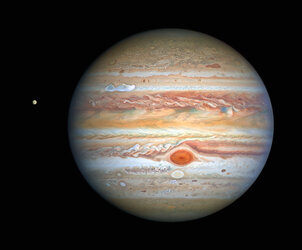The science: Juice’s key objectives at Jupiter
ESA’s Jupiter Icy Moons Explorer (Juice) is currently en route to the outer Solar System to study the intriguing Jupiter system.
Juice has a number of key science objectives, from exploring Jupiter’s three large ocean-bearing moons to probing the planet’s complex atmosphere and magnetic environment. Juice will work to unravel the history of our planetary neighbour, revealing how it formed, how it has evolved, and if life could ever have arisen somewhere within the Jupiter system.
What science will Juice explore?
Juice’s overarching theme is the emergence of habitable worlds around gas giants. The mission will consider two key themes of ESA’s Cosmic Vision 2015-2025: What are the conditions for planet formation and the emergence of life? and How does the Solar System work? To answer these – and other – questions, Juice will study many components of the Jupiter system individually, while also characterising how each interacts with one another to create what we see today.
The mission has two key areas of focus: Jupiter’s moons and Jupiter as a planetary system.
Jupiter’s moons: ocean worlds and possible habitats
Juice’s main goal is to characterise Jupiter’s moons as both celestial bodies and possible habitats for life (either past or present).
The system contains a number of ocean worlds – moons thought to have oceans beneath their surfaces – in Ganymede, Europa and Callisto. Juice will study their hidden ocean reservoirs, map their icy shells, and investigate their interiors. While their oceans are of key interest to Juice, each moon is also individually interesting: Callisto is an ancient world representative of the early Jupiter system, Europa appears to have a young and active surface that vents water to space, and Ganymede, the largest moon in the Solar System, is truly unique.
Ganymede will be Juice's primary scientific target. The moon displays a wide range of surface ages and features, providing a geological record spanning several billion years; it has a complex and unique relationship with the space environment around its parent planet, and it has both a subsurface ocean and an active magnetic dynamo. Only two other solid bodies in the Solar System generate a field like Ganymede’s, and both are planets (Mercury and Earth) – one of which hosts life.
Juice will also explore Jupiter’s smaller moons, including Io, on which active volcanoes soar up to 18 km in height, and Metis, Adrastea, Amalthea and Thebe, all of which orbit within Jupiter’s dusty rings.
The Jupiter system: a model for gas giants across the Universe
Many gas giants are known to orbit other stars. Jupiter is the largest of the gas giants in the Solar System, and is well-placed to act as an archetype for other such systems throughout the Universe. Jupiter has a hugely complex space environment, with the planet’s atmosphere, magnetism, moons and dusty rings all interacting with one another. By characterising and exploring how all of these components work together, Juice will help us understand not only what gas giant systems are like, but also how habitable places could arise in Jupiter-like systems elsewhere.
Juice will monitor the chemistry, structure, dynamics, weather and climate of Jupiter, and determine why the planet’s upper atmosphere is so unexpectedly hot. It will study how an atmosphere works without a solid surface beneath it, reveal what occurs within Jupiter’s magnetic environment (its magnetosphere), and explore how this shapes conditions on the planet’s moons – and vice versa. It will probe how Jupiter’s subtle ring systems are replenished with dust particles, and generally seek to improve our knowledge of Jupiter as both a unique planet and a model gas giant system.
Read more about how Juice will characterise Jupiter and its complex surroundings

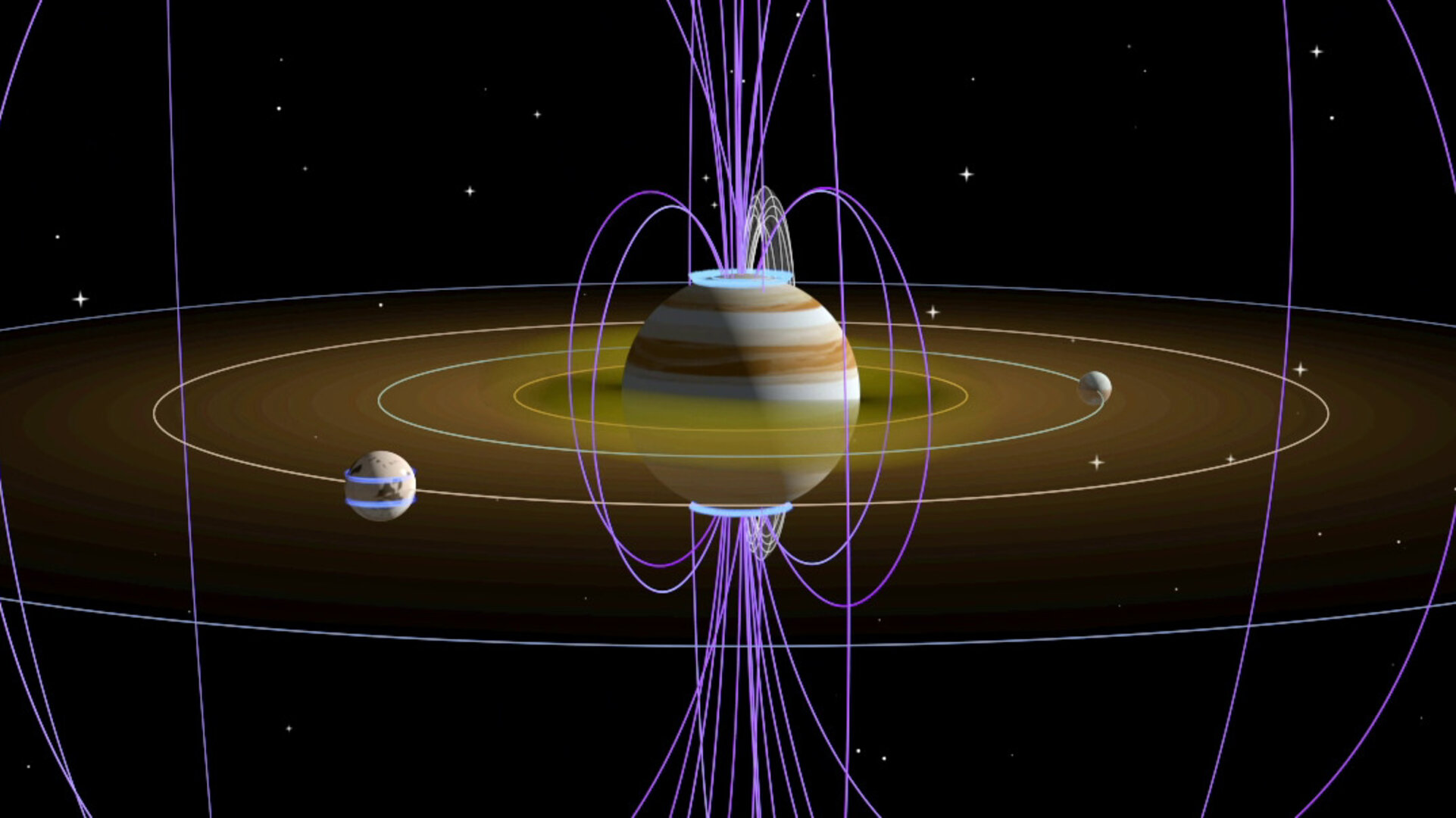
Access the video


